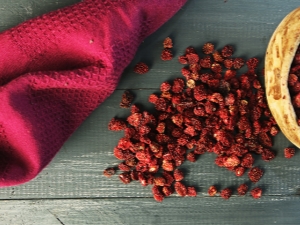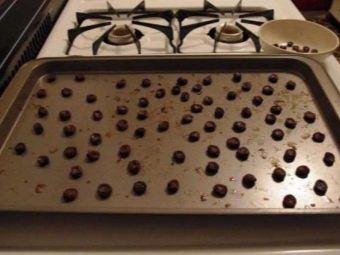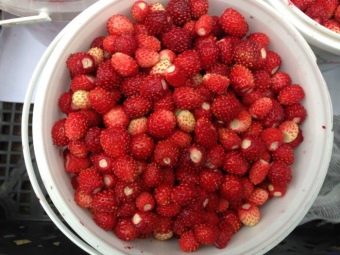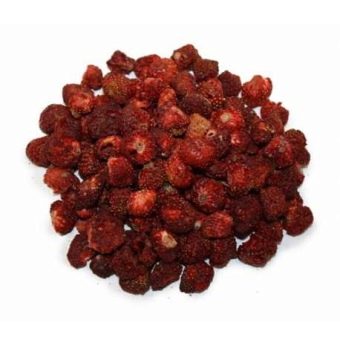How to dry strawberries?

Dried strawberries are widely used in traditional medicine and cooking, and not only berries, but also leaves have useful properties. Properly dried strawberries retain healing power and aroma for two years.
Ways to dry berries
Drying strawberries is a rather complicated and specific process. At the slightest oversight, the fruits become covered with mold and rot, and when the fruit is placed in high temperature conditions, they lose most of the beneficial properties and become nothing more than a treat. The drying procedure begins with a preparatory process, in which the main key to success is a strict ban on fruit washing. If this condition is not observed, the berries will quickly ferment and rot. To ensure the relative purity of the fruits, their collection should be done with clean hands and in a clean, dry dish.
It is necessary to select only those berries that are as high as possible above the ground and are less likely to be affected by parasites. The optimum height is 5 cm. Berries located above this level can be safely collected for harvesting. Fruits hanging lower can be used for fresh consumption or for making jam. After collecting the fruit should be carefully selected, while removing debris and sepals. It is recommended to select only whole intact berries that are not subject to rotting and are not moldy. From overripe fruits should also be abandoned, because they have thinned skin, which when cracked can lead to rotting berries.
After the berries are selected, you can proceed to the choice of method of drying. Forest strawberries at home can be dried in several ways, each of which requires certain knowledge and patience.
In the oven
This option is the most common method of harvesting berries and occurs in two stages. Initially, the oven warms up to + 30– + 35 degrees, the berries are evenly distributed on the baking sheet and placed in the oven. Drying of fruits is done within an hour, after which the temperature rises to +60 degrees. At this temperature, the berries are in the closet for several hours, after which the baking sheet is removed. After such drying, the berries change their color to maroon, the grains begin to shine and become clearly visible, and the fruits are freely separated from each other and do not stick together.
After the berries have cooled, they are poured into dark glass jars and removed for storage. Some housewives prefer to store dried strawberries in rag sacks or paper bags.
However, this method of storage has some drawbacks. The fact is that dried strawberries exude a pleasant aroma that attracts ants, cockroaches and fire-moths, devouring tasty fruits with pleasure. Therefore, the most reliable way to preserve the berries are glass jars.
In the open air
Drying in fresh air requires much more time and effort than drying in an oven, and can be done in two ways. In the first case, the berries are laid out in a thin layer on a dense fabric and carried to the street. The place where the tray with the fruit is located should be well lit by sunlight and blown. After sunset, the berry is brought home, and in the morning is taken out again in the sun. The duration of drying strawberries in this way is from 2 to 3 weeks.
The second method is to hang the berries with twigs and leaves. This should be done in a well ventilated and fairly shaded area. To dry the strawberries in this way, the stems with berries are collected in bouquets and tied in several pieces. Some housewives recommend lightly rinse the bushes in cool water, then hang berries on the stretched rope down. If the air temperature does not fall below +25 degrees, then in a week the bouquets will dry.
Next, you need to remove the thread, break or cut the bouquets into small pieces and remove for the winter.
The disadvantages of this method are the need to monitor the weather. So, at the slightest rain bring the berry into the house. In addition, flies and other insects constantly sit on the plants, so eating dried strawberries in this way can only be used to make tea or dishes that use boiling.
In convection oven
Drying in conveying ovens is the simplest and less labor-intensive method of harvesting berries. Convection oven is installed on the mode of +60 degrees and the average speed of the blower. Drying time will then take much less time compared to the oven. This is due to the active air circulation and the outflow of moisture, which can be achieved by leaving a small gap in the lid. For these purposes, a toothpick or skewer, inserted under the cover. The disadvantage of this method is the small size of the air-grill, because of which the berry will have to be dried in several batches. The capacity of an average aerogrill is 0.8–1.2 kg of fruit, but the output is only 300–400 grams.
In the electric dryer
Drying in an electric dryer can take from 6 to 12 hours. The berries are laid out in one layer so that they do not touch each other, and dried at a temperature of +30 degrees for 5 hours. Then the temperature in the dryer rises to + 60– + 65 degrees and the fruits are dried until ready. Periodically pallets should be checked and, if necessary, interchanged. Dried fruits do not stick together, well separated from the pallet and do not stain hands. After the berries dry, they are cooled and stored in jars for storage.
Leaf preparation
The collection of leaves for drying is produced during the flowering of strawberries. This is explained by the fact that it is during this period that the nutrient content of the leaves of the plant is at its maximum, and after the fruits ripen, there is an almost complete loss of the healing properties of the leaf. When collecting, you should choose clean and intact leaves, which will eliminate the need to wash them and reduce the risk of the presence of parasites in them. After collecting the leaves are laid out in a dry and blown place, away from direct sunlight and periodically mixed. If drying is performed in the oven, then it is not recommended to set the temperature above +45 degrees. This will help the leaves to dry evenly and not lose their healing properties. Dried leaves can be stored for one year.
Ways of use
In the process of drying, strawberries, of course, lose a significant part of their healing properties, but fully retains the unique taste and aroma. Dried berries are often used as a filling for pies, additives for cocktails and ice cream. Berries are indispensable for cooking jelly, drinks and desserts, as well as often mentioned in recipes of traditional medicine. For example, tincture of dried fruit can be used in diseases of the gastrointestinal tract and urinary tract, as well as a tonic and tonic. In the external application of the infusion of berries heal wounds, ulcers and acne.
Dried leaves are used to brew vitamin teas, which are a source of nutrients and perfectly quench thirst. In folk medicine, using a decoction of strawberry leaves, gargling is performed in case of sore throat. The use of decoction inside is useful for gastritis, liver disease, gastric ulcer and pancreatitis. In addition, strawberry tea has beneficial effects on intestinal peristalsis and improves the condition of the entire digestive system.
In this video, talk about the unique method of drying strawberries.

































